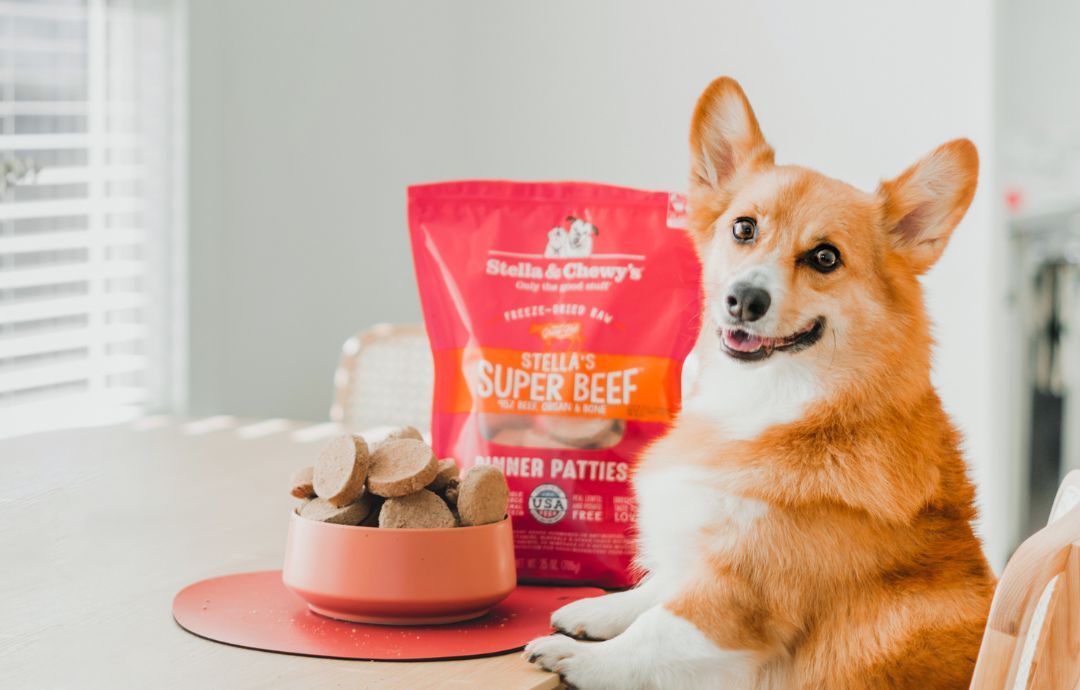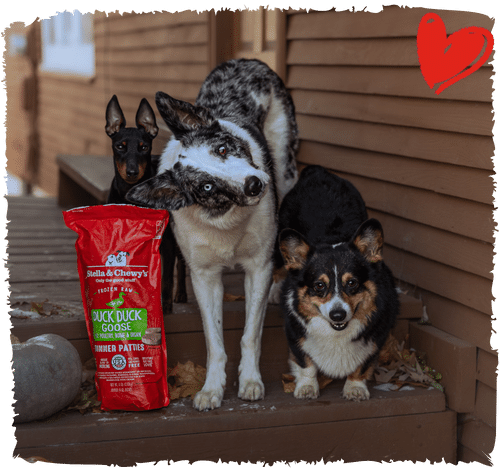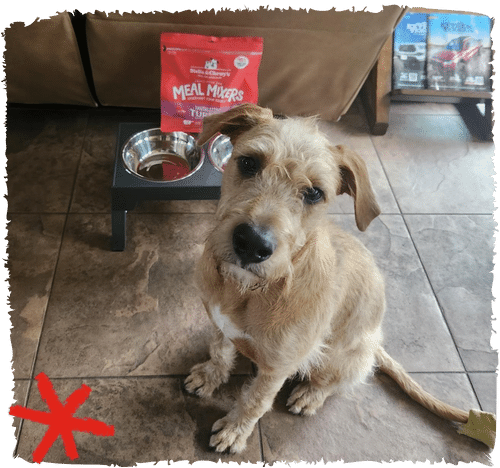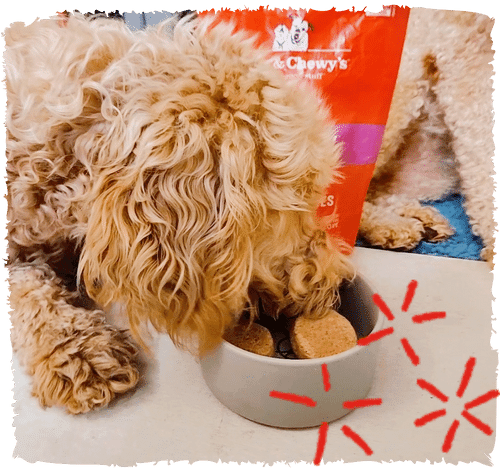
Feeding your dog the right amount of food is a crucial part of being a good dog parent. However, even the best-researched feeding guidelines don’t always apply to every dog, since each dog is unique. Keep reading to learn how your dog’s age, size, breed, activity level and overall health can affect how much and how often they should eat to support good health.

Why It’s Important to Feed the Right Amount
Most dogs aren’t able to determine for themselves how much they should eat, so it’s up to dog parents to give them the correct amount. Just like people, undereating and overeating can lead to health issues that keep your dog from thriving.
Feeding your dog too little can lead to:
- Low energy
- Hair loss
- Dry skin
- Weakened immune function
- Slower healing from injury or illness
- Unhealthy gut microbiome
Unintentional underfeeding can be more common in homes with multiple dogs, so it’s important to watch your dogs as they eat to make sure each one is getting enough. Estimating the right amount (rather than measuring) is another way a dog may be accidentally underfed.
Overfeeding your dog can lead to:
- Unhealthy weight gain
- Indigestion
- Joint pain
- Lethargy
- Inflammation
- Skin problems like excessive shedding or itchiness
Even if you’re overfeeding high-quality dog food, an overtaxed digestive system and an excess of certain nutrients (especially carbs and fats) can create unhealthy imbalances.

How to Feed Your Dog the Right Amount of Food
There are a few different factors that affect the correct amount to feed an individual dog, including:
Type of Dog Food
Raw dog food, kibble and wet dog food can all be healthy diets for dogs. Frozen and freeze-dried raw dog food is nutrient dense and very low in carbs, making it a great option for dogs prone to weight gain.
High quality dry dog food (kibble) can also be a great source of energy and nutrition for dogs. Wet dog food has high moisture content which can be helpful for dogs that don’t drink enough water.
Whichever type of food you choose, be sure to review the feeding guidelines on the product label. Each dog food format has a different density, moisture content and ingredient profile, all of which can affect the recommended portion size.
Recommended Feeding Guidelines
Keep in mind that the recommended servings on the dog food label refer to the daily amount of food, not how much to feed per meal. Depending on how many meals you serve your dog each day, you’ll need to divide the total amount by that number.
How Often You Feed Your Dog
Most adult dogs are content eating twice a day, though each dog’s feeding routine largely depends on their parents’ schedule. Puppies need to eat more often, typically at least three times a day.
The more meals your dog eats each day, the smaller each one should be. Also, if you give your dog treats on a regular basis you’ll need to factor those in. Treats should make up no more than 10% of your dog’s total daily calories.
Overall Health & Activity Level
Highly active dogs have a higher metabolism and require more dog food to fuel their active lifestyle. Less active dogs don’t need as much food to maintain energy levels and a healthy weight.
Your dog’s overall health affects their metabolic rate as well. Chronic health conditions like diabetes can slow metabolism, as can impaired thyroid function, and infection. Spayed or neutered dogs have a slower metabolism compared to intact dogs, making them more prone to weight gain.
Age & Size
As dogs age, their metabolic rate can slow down if they become less active and lose muscle mass, which is common in older dogs with arthritis. Aging can also mean changing hormone levels that slow metabolism. Learn more about feeding your senior dog.
Your dog’s weight and body composition also factor into feeding requirements. Large dogs need more calories than small dogs. More muscular breeds (like boxers) burn more calories compared to breeds with less muscle mass (like pugs).

Ask Your Vet How Much to Feed Your Dog
Because there are so many different considerations for the optimal amount to feed your dog, you should ask your veterinarian to assess your dog’s health and make a personalized feeding plan. This is especially important if you feel uncertain about how much to feed your dog, or if they have any health issues.
Follow your vet’s recommendations and keep up with regular wellness checks so your dog’s diet and feeding schedule can be adjusted, if necessary.

Choosing the Best Food for Your Dog
At Stella & Chewy’s, we offer a wide range of dog foods made from high-quality ingredients. Most of our dog food recipes include complete and balanced nutrition for dogs of all life stages.
You can use our dog food finder to help you narrow down your choices, learn more about grain-inclusive and grain-free dog foods, or discover how to choose the right food for your puppy.
Feeding Calculators & Other Resources
You can find a feeding calculator on the product page of your dog’s favorite food if you scroll down to the feeding guidelines. Once you understand how much food your dog should eat, keep reading to find tips for feeding a picky dog, and how to introduce your dog to a raw diet. To learn more about feeding your dog the best diet possible, check out more articles on our blog! Create a Pet Profile to have expert advice delivered straight to your inbox.
GET $3 OFF, INSIDER OFFERS, AND HELPFUL PET CARE TIPS.
By entering your information, you are opting in to receive communication from Stella & Chewy's
